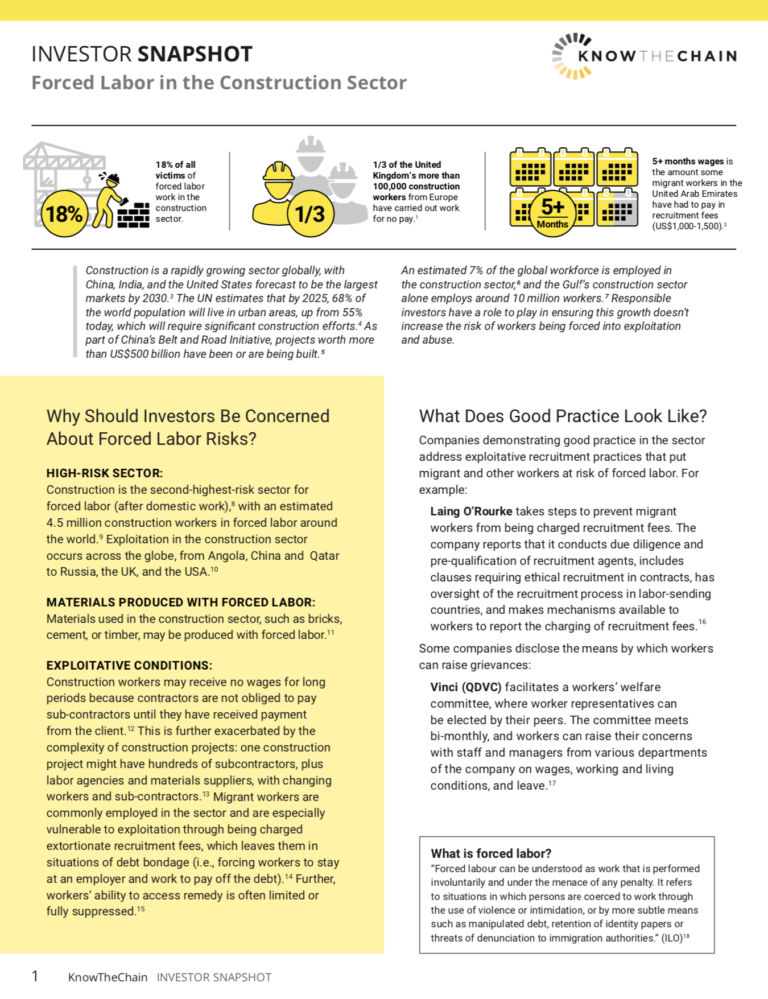KnowTheChain’s Investor snapshot on Forced Labour in the Construction Sector highlights why investors should be concerned about forced labour risks in the construction sector, what the sector is doing to address these risks, and what action investors should be taking.
Construction is a rapidly growing sector globally, with China, India, and the United States forecast to be the largest markets by 2030. The UN estimates that by 2025, 68% of the world population will live in urban areas, up from 55% today, which will require significant construction efforts. As part of China’s Belt and Road Initiative, projects worth more than US$500 billion have been or are being built.
An estimated 7% of the global workforce is employed in the construction sector, and the Gulf’s construction sector alone employs around 10 million workers. Responsible investors have a role to play in ensuring this growth doesn’t increase the risk of workers being forced into exploitation and abuse.

